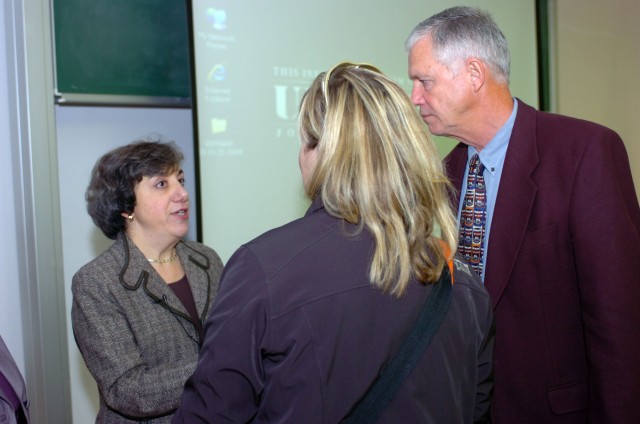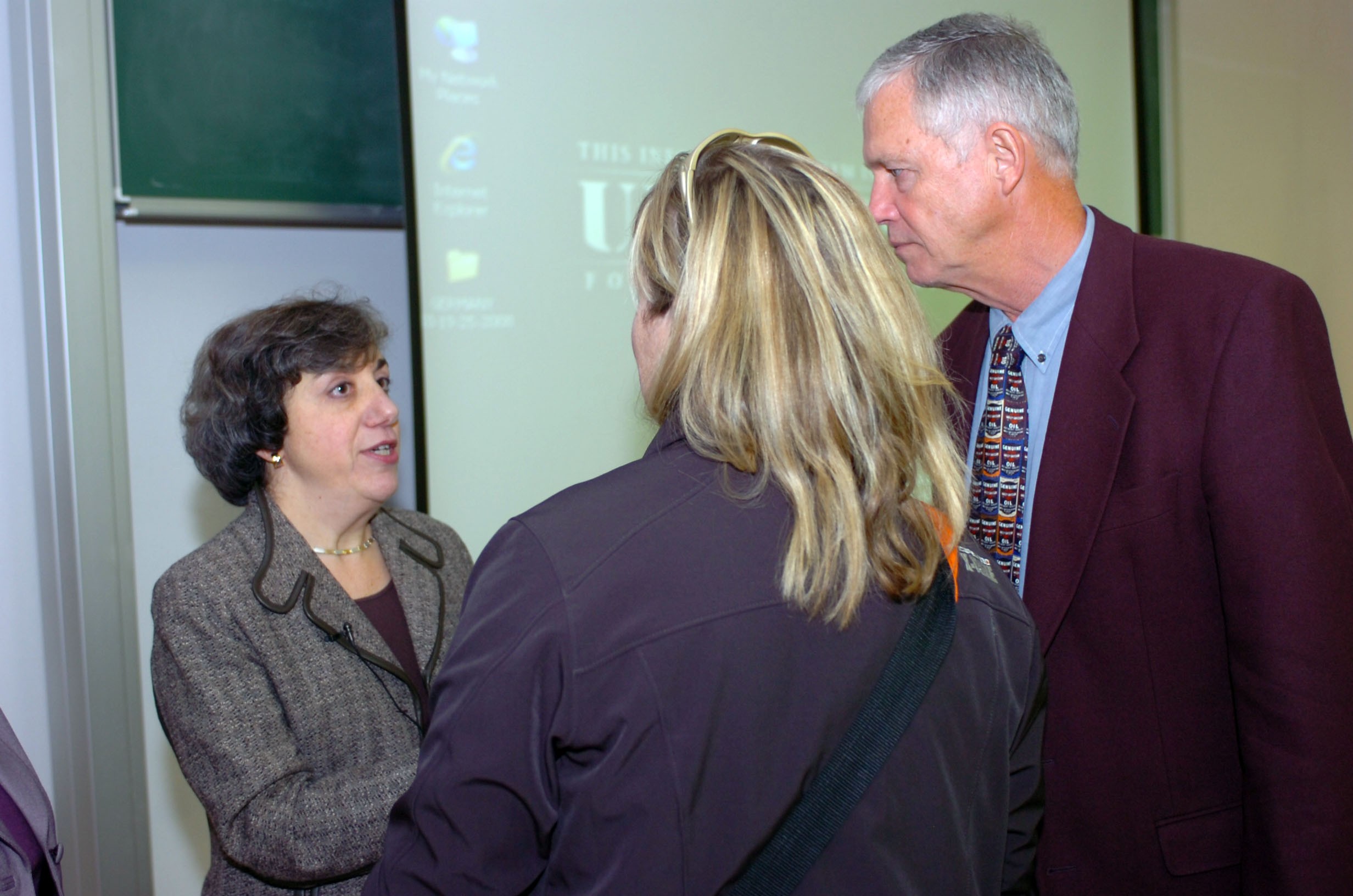
HOHENFELS, Germany - A Pentagon official visiting U.S. Army garrison Hofenfels and the Joint Multinational Readiness Center said the military only makes itself stronger when it seeks out and hires qualified handicapped workers.
Dinah F.B. Cohen, director of the Department of Defense's Computer/Electronic Accommodations Program, was the featured speaker at garrison's Oct. 22 commemoration of National Disability Employment Awareness Month. The program was held at the JMRC Headquarters and featured nearly 100 local military and civilian leaders in attendance.
Those in attendance were treated to a spirited presentation. Cohen spoke without a microphone, but filled the room with her heart-felt message that DoD needs to hire handicapped workers to not only comply with the law, but to strengthen its own ranks as well.
"It is not about them," Cohen said. "It is about us."
Cohen is in charge of programs that help handicapped workers use technology to perform tasks their disability prevents them from doing. These services offered by the CAP cover a wide range of maladies including those suffering from hearing, vision, dexterity and communication handicaps.
Cohen is passionate about her work. She shared her intensity with the Hohenfels community during her hour-long presentation. It was the third of nine planned stops she in plans in Western Europe.
Cohen said this year's commemoration is especially important since the number of federal employees with handicaps is dropping. She cited statistics showing the number of handicapped employees in the federal work force has dropped from 1.24 percent in 1993 to 0.94 in 2006. She estimated it has gone down even further to 0.92 at the present day.
"If this represented any other ethnic group or women, you folks would be livid," Cohen said. "I'm asking for your help to change that image and improve that snapshot."
By department, the numbers range from a high 1.73 percent handicapped workers in the Treasury to a low of 0.36 in the Homeland Defense Department, Cohen explained. She said the goal across the federal government is 2 percent by 2010. To do that, supervisors need to consider hiring handicapped workers when the need arises. She said 71 percent of disabled workers are either unemployed or underemployed in today's workforce.
"It is unbelievable the kind of talent you are going to find in this one pool," Cohen said.
Cohen urged supervisors to consider the advantages they have hiring under Schedule A, which lets supervisors hire handicapped workers noncompetitively. A worker hired under Schedule A may take only a month to place while a non-handicapped worker can take up to six months to hire.
"I'm a woman who came in under Schedule A, and I think I'm pretty damned good," Cohen said.
Handicapped college students can be a big source of potential employees, Cohen said. Up to 30 percent of this group may also be minorities who can fill a dual purpose in bringing more diversity to the work force. Another group that is growing among the ranks of handicapped workers are wounded Soldiers. Cohen described them as her "newest customers," and said their ranks are growing after seven years of sustained conflict following the Sept. 11, 2001, attacks.
"I believe the reason CAP is so successful because it is a part of the Defense of Defense," Cohen said. "We've always had a long-standing commitment to disabled veterans. I have seen a true shift in more support since this Global War on Terror now that there are new service members coming back with devastating injuries."
This past year alone, Cohen's office has fielded more than 4,500 requests for accommodation from wounded veterans. She said the DoD leadership has become even more sensitive to the plight of the handicapped in light of the casualties suffered in recent years.
"I've seen a new energy and a new passion," Cohen said. "People think it's a little strange that the biggest program in the world to accommodate people with disabilities is with the Defense Department.
"I truly believe it's because we have a different type of commitment to these issues." It's not just military veterans who are sliding into the ranks of the handicapped.
Cohen said the federal work force as a whole is aging - or as she prefers to call it "chronologically advantaged." With the graying of the force many are not as capable as they once were to carry out their duties.
A number of federal workers also become handicapped after accidents suffered as adults. She most of the nearly 70,000 accommodations her office has made in nearly 20 years were to help those who were not born with a handicap.
"This is a one-and-only population you can join at any time," Cohen said. "It is something we all need to respect because we're all a car accident away from joining that population."
The event was sponsored jointly by the USAG Hohenfels Equal Employment and JMRC's Equal Opportunity offices. It goes along with this year's National Disability Employment Awareness Month theme of "America's People, America's Talent, America's Strength."
The strong turnout was an encouragement to one of the event's organizers. Master Sgt. Chris Mulvihill, equal opportunity advisor for JMRC and USAG Hohenfels, said he was pleased that Cohen's speech drew nearly 100 in attendance from "a diverse group" of organizations from a cross section of the community.
"I was pleased that so many members of our military and civilian leadership came to our event," said Mulvihill, who hails from Albuquerque, N.M. "It shows a real commitment on their part."
Get more information on the CAP program at its website: www.tricare.mil/cap.

Social Sharing